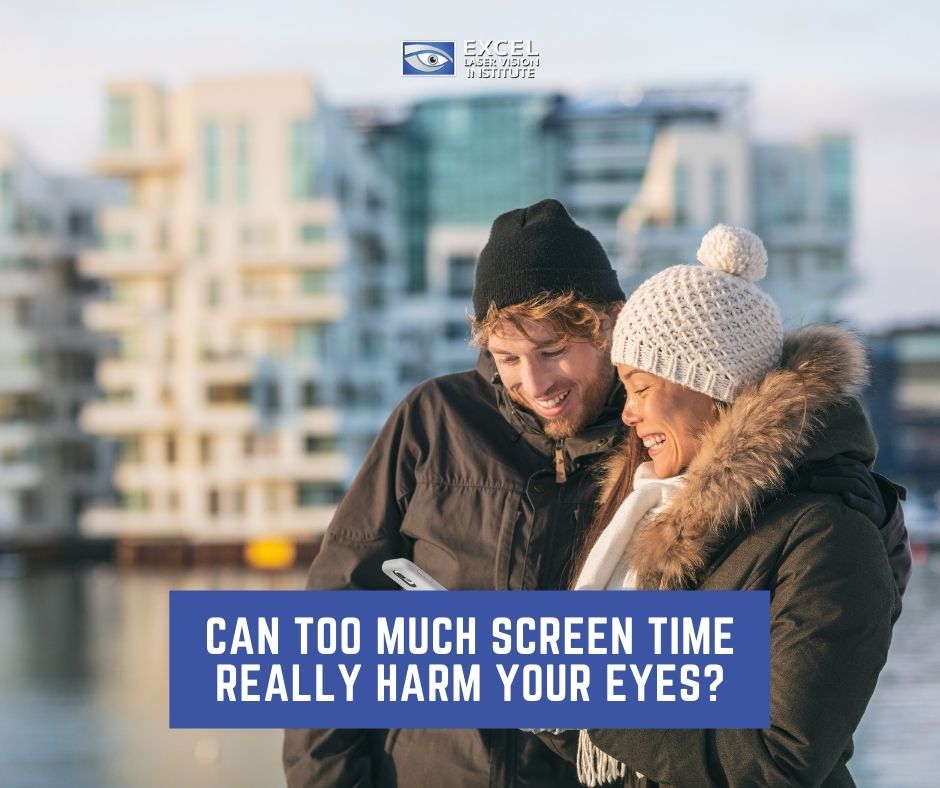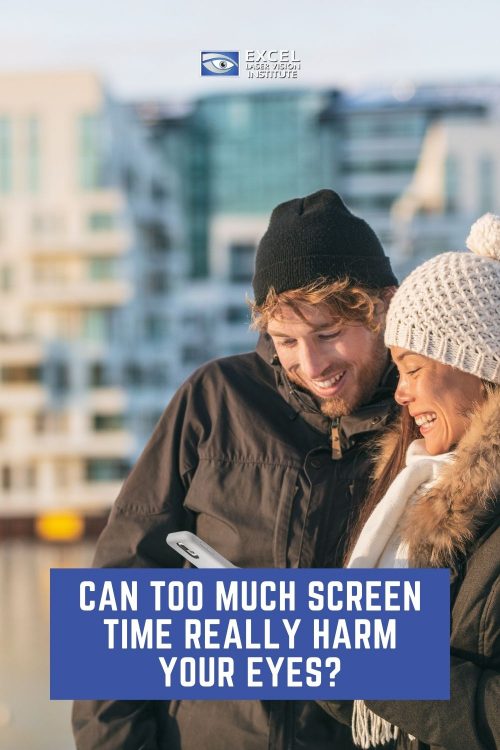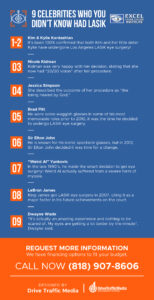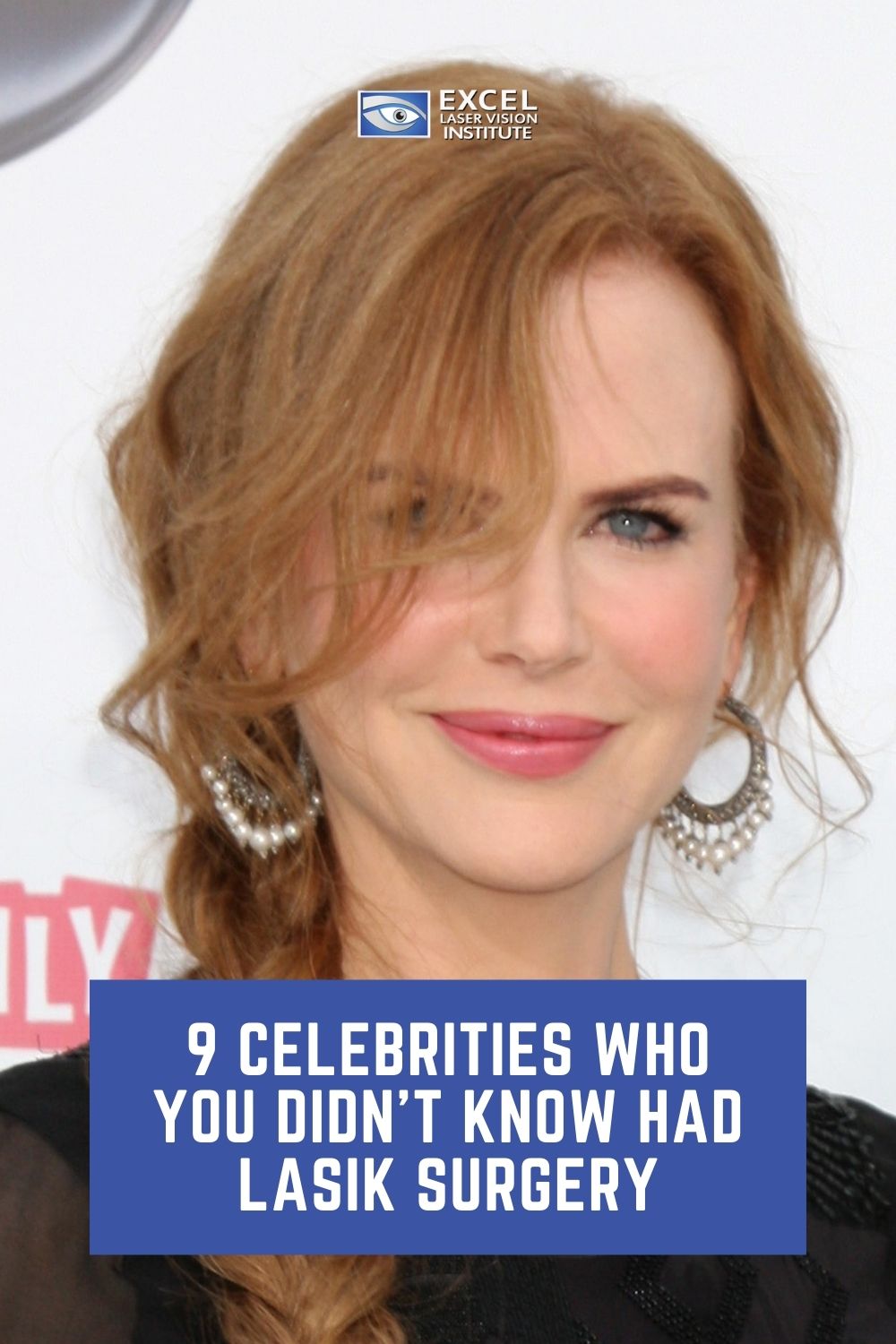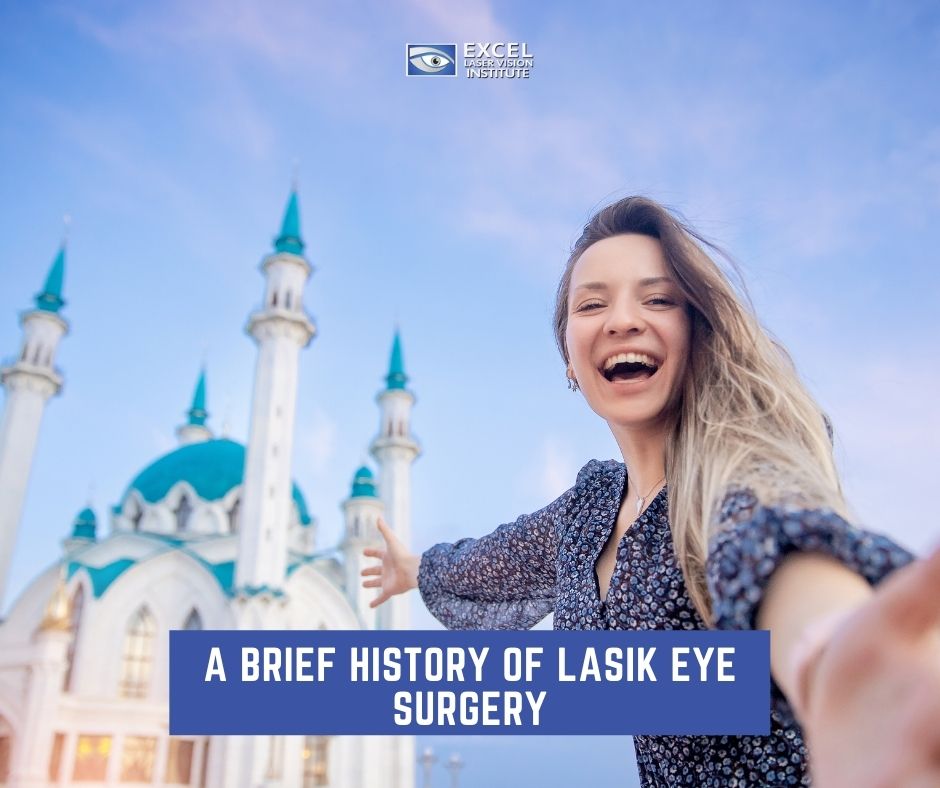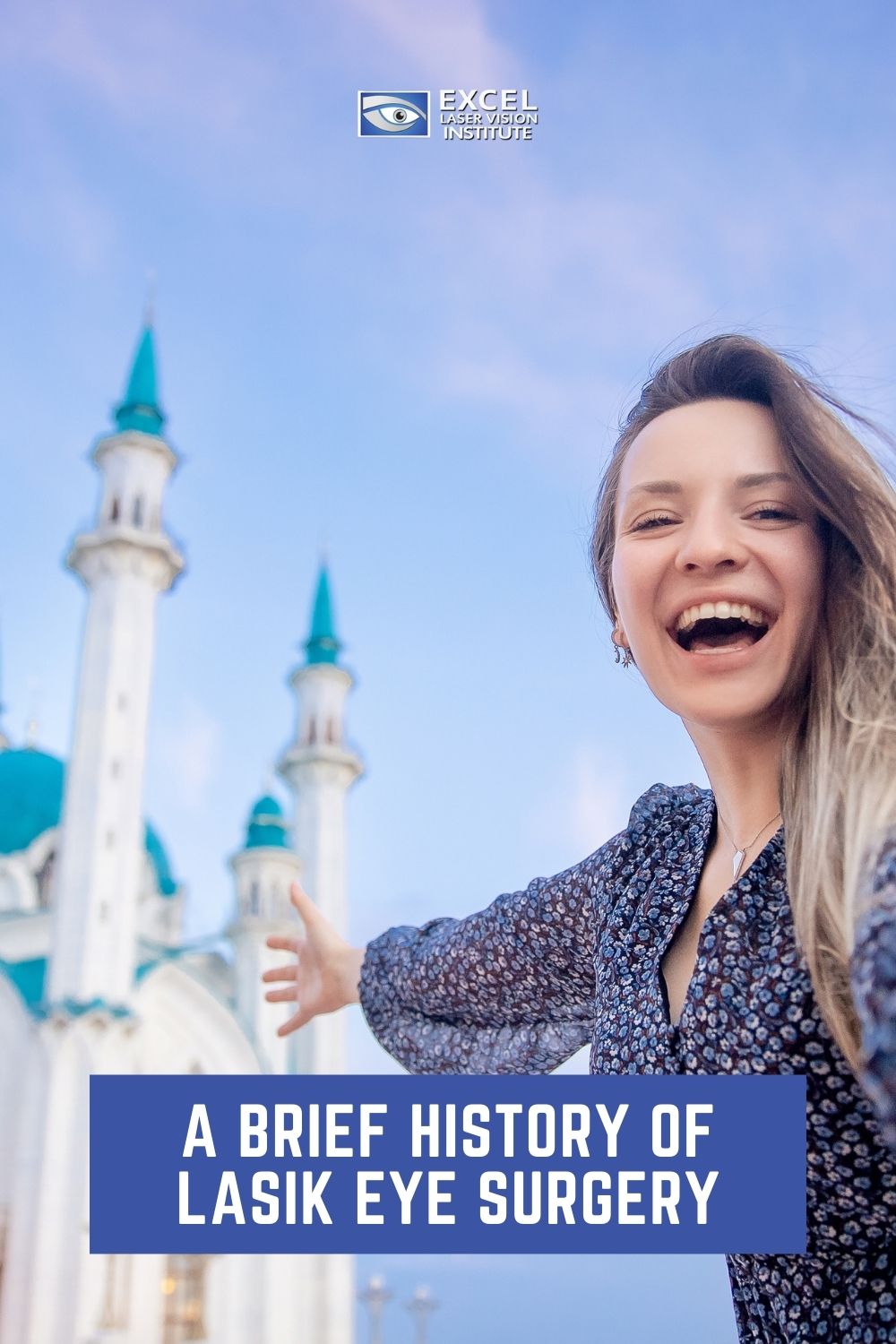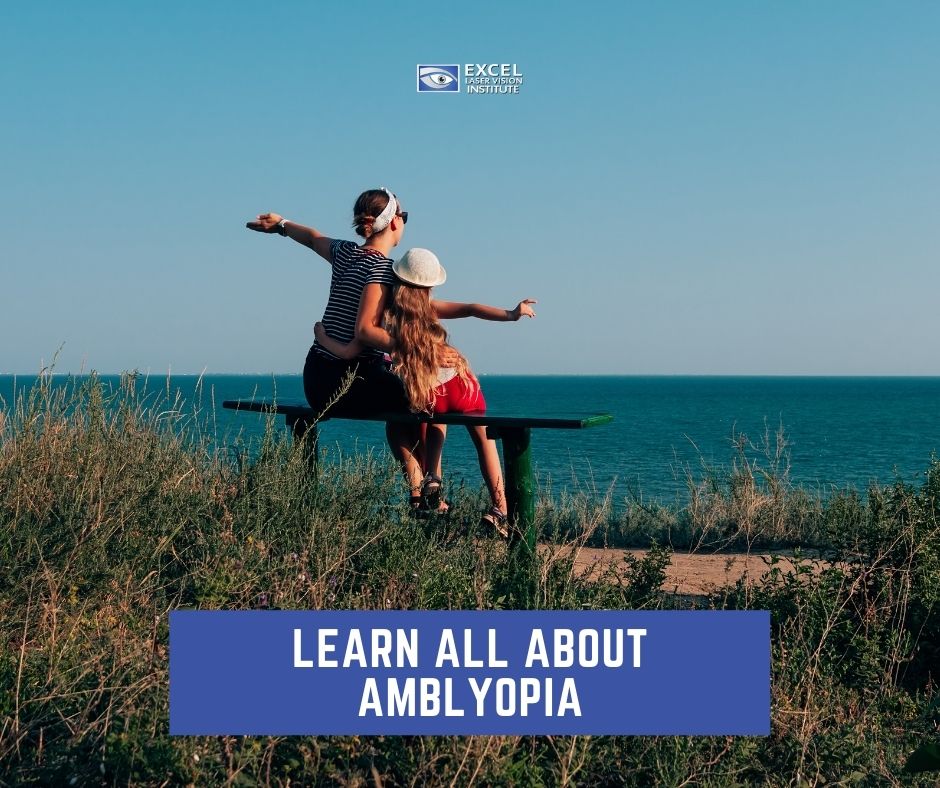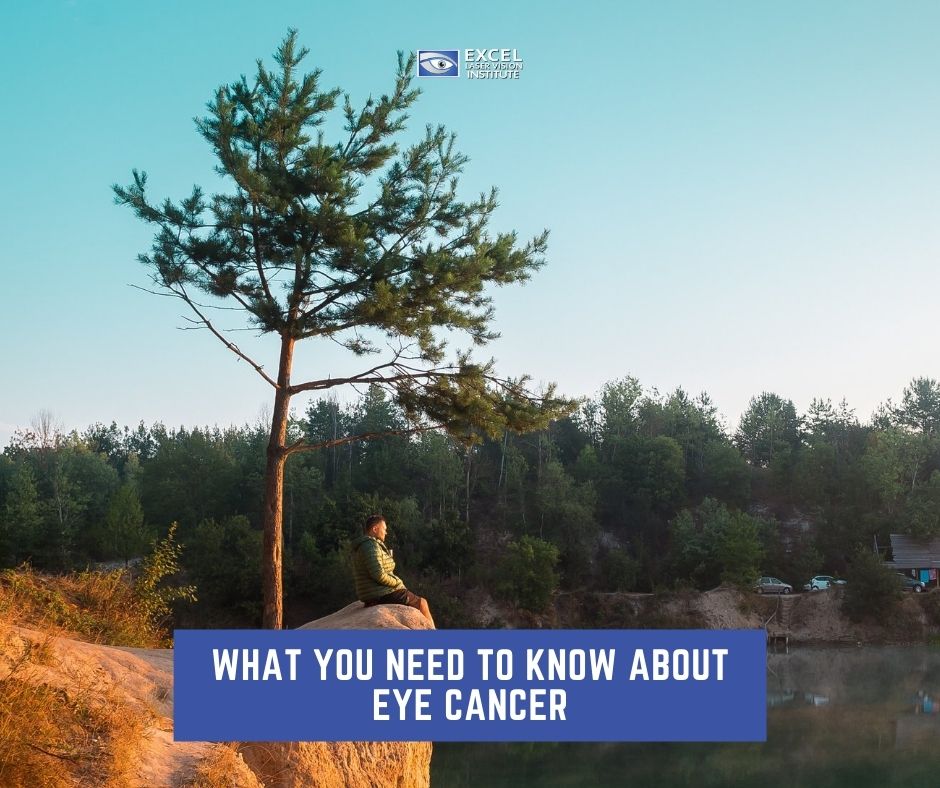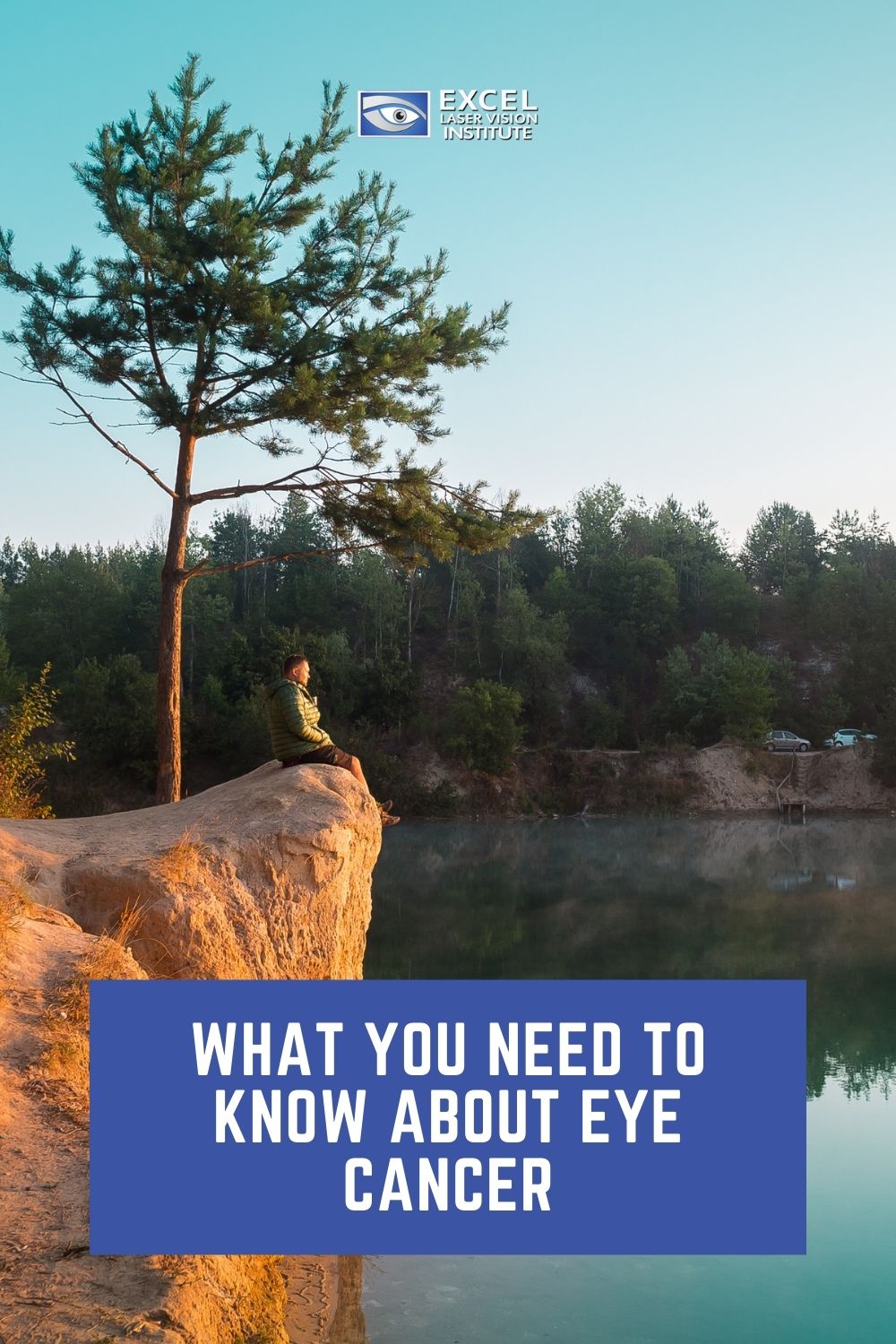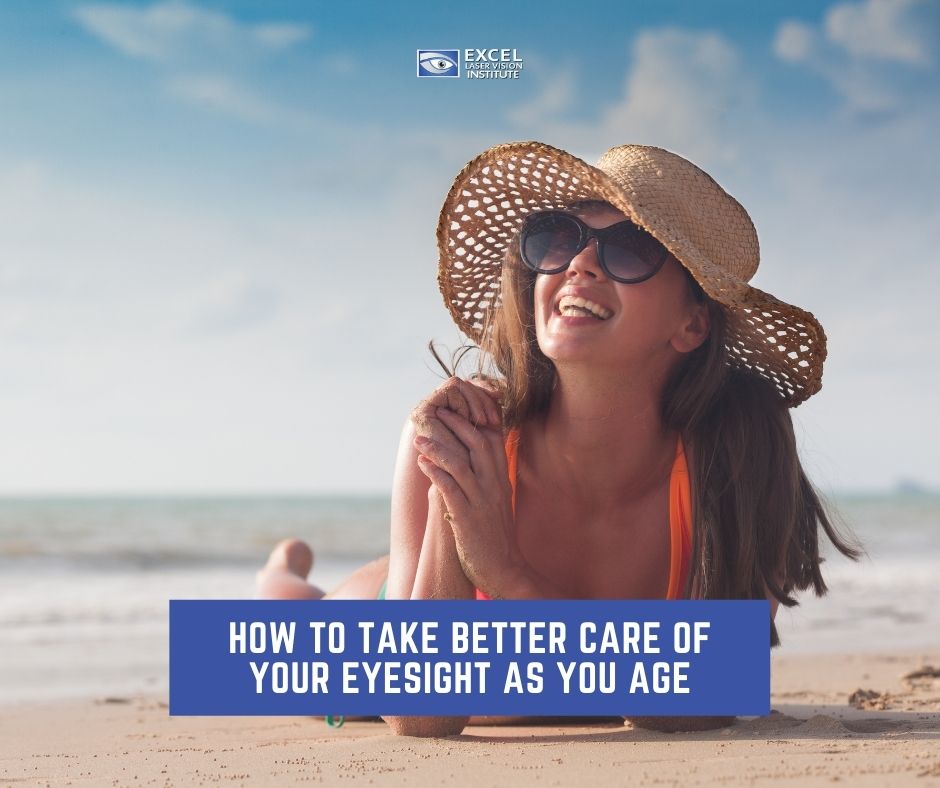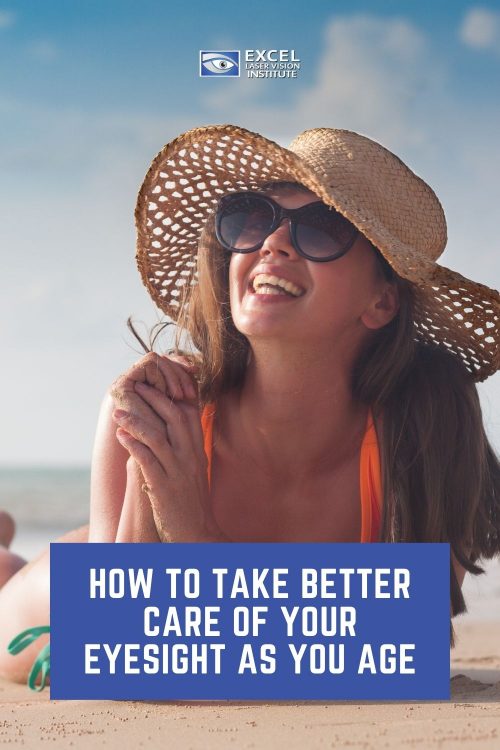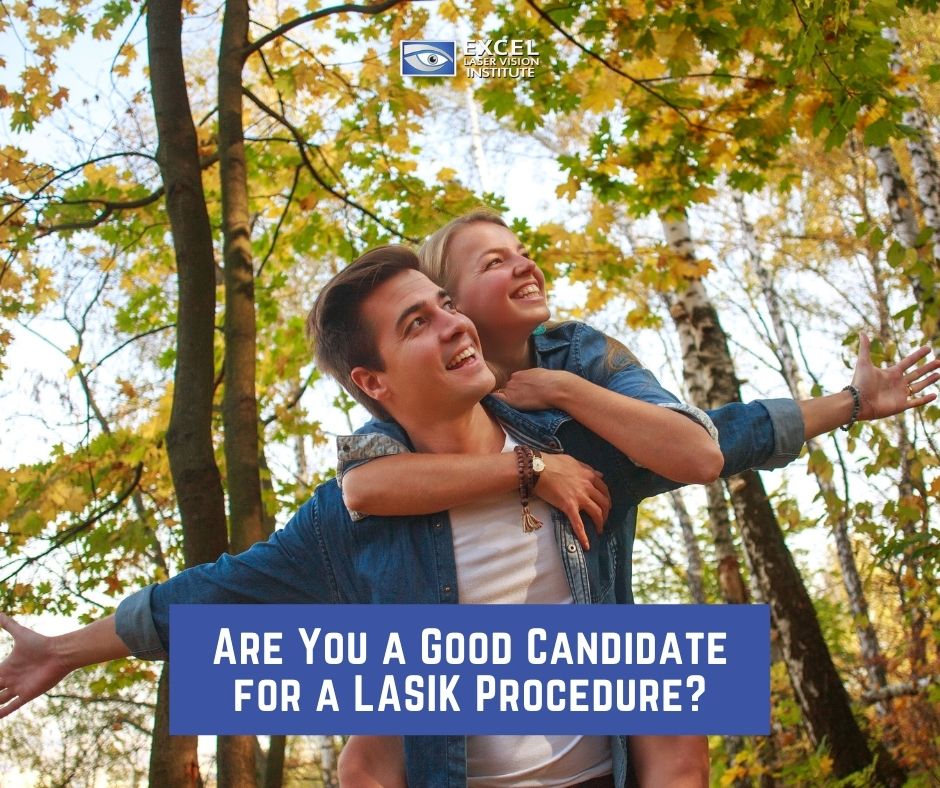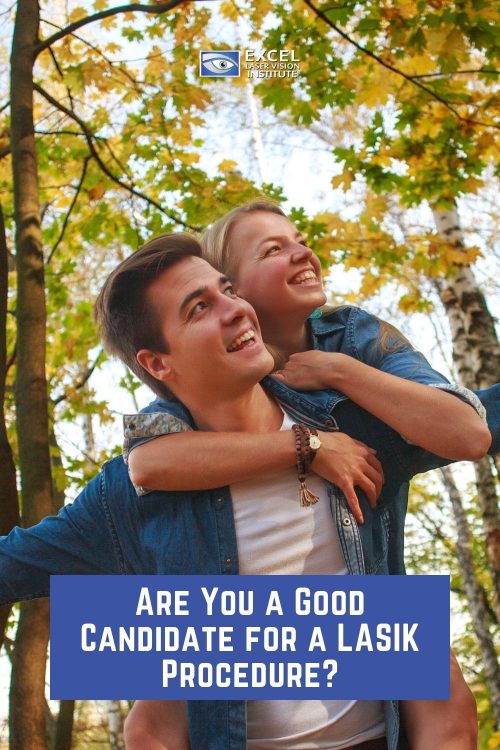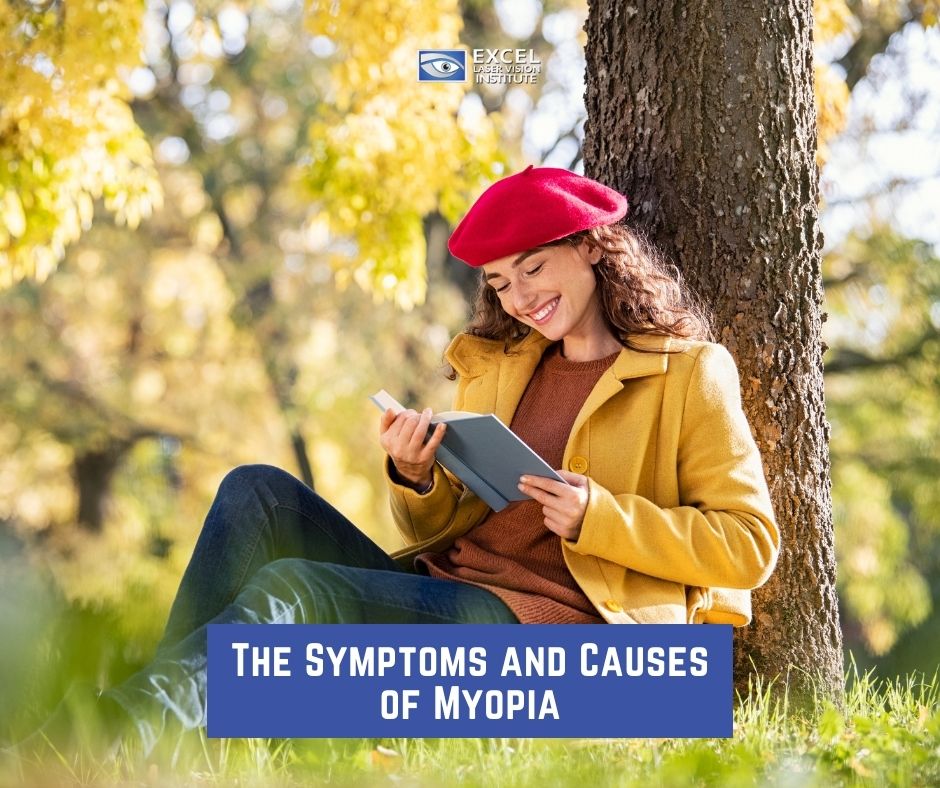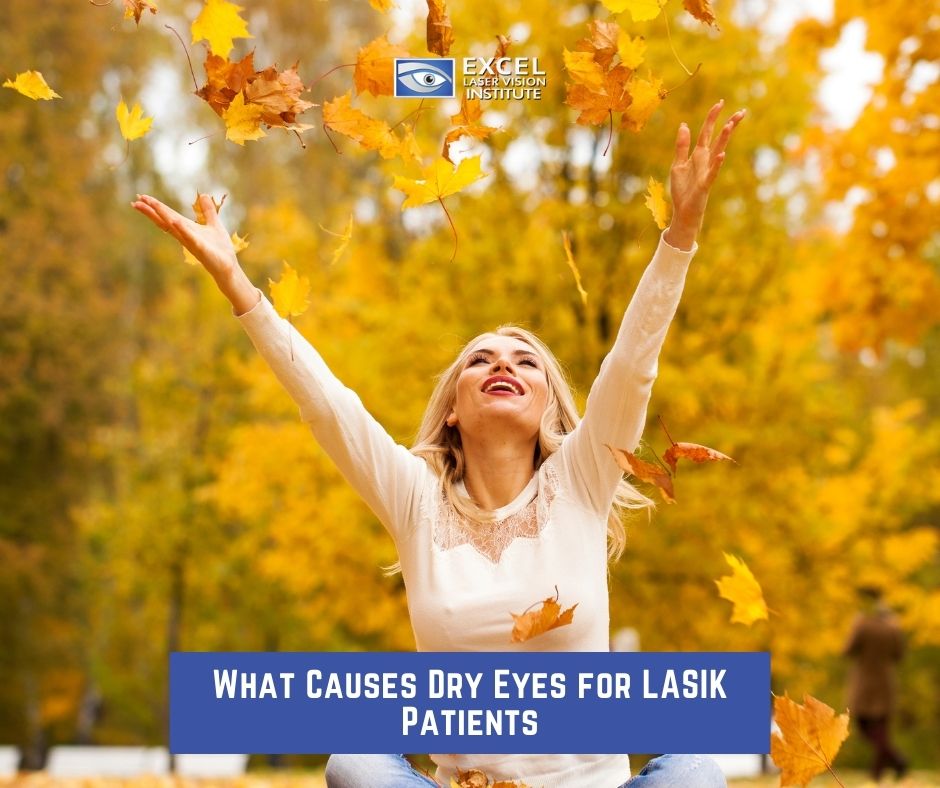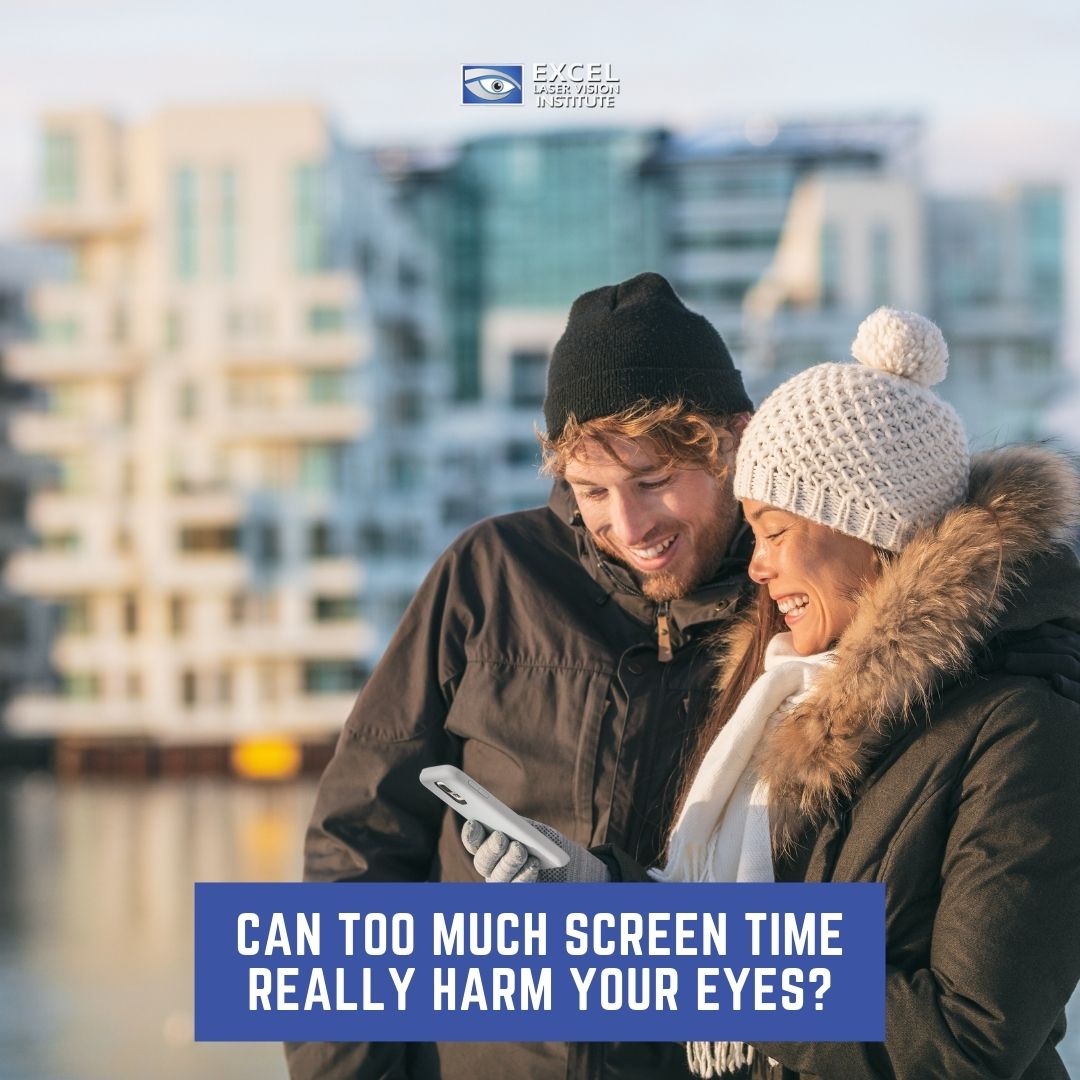
Can Too Much Screen Time Really Harm Your Eyes?
We’ve all heard about how spending too much time on your computer or your cell phone can come with consequences for your eyes. Your parents may have set limits on how long you were allowed to watch TV when you were a child, but in a modern world highly motivated by technology, it can be difficult to catch a break when you need these devices for work or to stay in contact with members of your household. Hope is not all lost, though. Our LASIK Orange County specialists can teach you how to effectively manage your screen time and take better care of your eyes by becoming aware of the risks and how to monitor how much time you are really spending on all of your devices.
How much time are you really spending on your phone?
Based on several studies conducted, it appears that the average American spends between 3 hours and 15 minutes to 3 hours and 43 minutes a day on their cellular devices. People are also checking their phones an average of 58 times a day, 30 of those times being during work hours. As mobile device use increases, the amount of time spent watching television decreases. During the 2020 lockdowns, screen time only increased.
What is digital eye strain?
DIS, also known as computer vision syndrome, is a common vision problem that persists in individuals who are using their devices for 2 uninterrupted hours. It is disturbingly common, as it has been surveyed 58% of American adults suffer from DIS/CVS. While permanent vision damage from screen time is rare and it’s probably not going to lead you requiring Orange County laser eye surgery, it can lead to damage in your retina. If you do not take adequate breaks away from the screen, you may experience pain in your eye or headaches. If you are not drinking an adequate amount of water everyday, then you are more likely to experience frequent headaches. If you have pre-existing eye conditions, this can also escalate the problem.
Too much screen time can also be linked to other physical and psychological health problems, including obesity, insomnia, depression & anxiety, neck and back problems, and poorer grades.
Addiction just as bad as dependence on physical substances?
It’s easy to understand how easy it is to get immersed in the world of screens. Unlike the traditional television, you get to control what content you see and when you want to see it, and for how long. You can do just about anything on the Internet, almost giving you a sense of augmented reality, but can being addicted to a screen be just as bad as other forms of addiction such as gambling, alcohol or drugs?
Almost anything that triggers our reward system can become addicting because everyone wants to feel good all the time. Experts disagree on whether or not screen addiction should be approached the same as other forms of addiction. Mark Griffiths, a Nottingham Trent University behavior addiction professor has stated his own opinion on the topic, “I certainly believe that things like video games, social media, gambling, et cetera, can be genuinely addictive. [But] by my definition, very few people are genuinely addicted to video games or are genuinely addicted to social media.” In other words, he believes that screen activity addiction is serious, but the amount of people who actively suffer from this issue is exaggerated.
It also turns out that it’s not the screen itself that causes the addiction, but it is dependent on the type of content one is consuming. The faster the pace, the more addictive.
What is the 20-20-20 rule?
It is recommended that every 20 minutes you spend on a screen, that you do something else for 20 seconds, 20 feet away from your device. This can help reduce eye strain caused by looking at a screen for too long. You can also try to do some of your favorite activities offline. If you are an avid reader, for example, read the old fashion-way again and shop for physical copies of your favorite books.
Conclusion
If you feel that your eye strain may be caused by an underlying condition not caused by your screen time, talk to your eye specialist right away. They ask you questions regarding your optical and general medical history and run any necessary exams, but if you are someone who has difficulty even looking at screens due to preexisting vision problems, then you may be a candidate for Orange County LASIK eye surgery. If you are seriously considering this option for you and aren’t sure where to begin the process, give us a call today at (866) 923-9235.
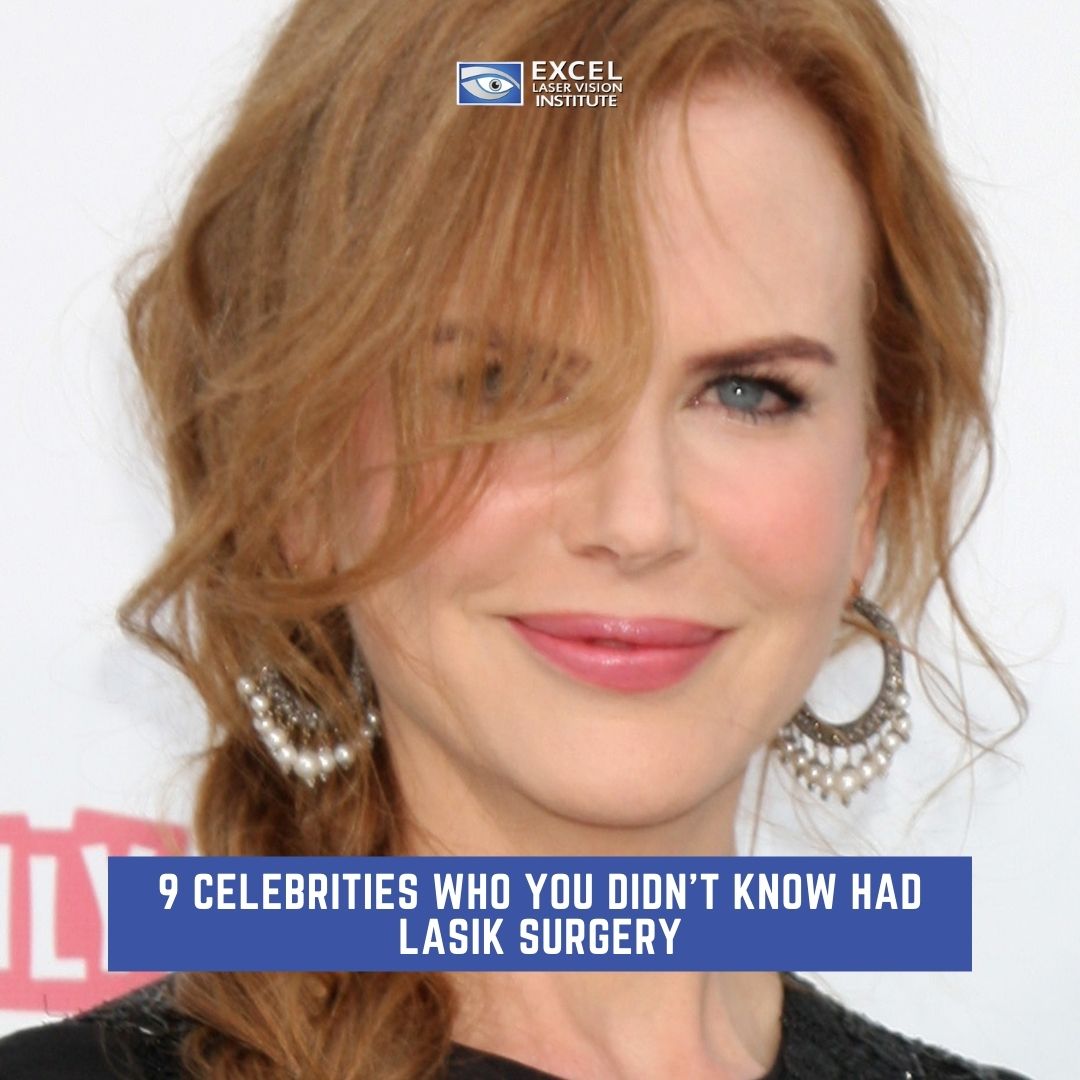
9 Celebrities Who You Didn’t Know Had LASIK
You often hear about celebrities going through cosmetic surgery to enhance their physical appearance, but are you familiar with which of your favorite stars have gone through Los Angeles LASIK eye surgery to improve their eyesight? Here’s a hint: there have been more than you think! You’ll have to see the list below to believe it!
Kim & Kylie Kardashian
Love the Kardashians or hate them, it’s been 100% confirmed that both Kim and her little sister Kylie have undergone Los Angeles LASIK eye surgery! Kim decided to go through the procedure prior to her Las Vegas show. A little over a decade later, Kylie had begun to experience problems with her eyesight during her pregnancy with her daughter, Stormi. She had to rely on glasses to help her see. Inconvenienced by them, she decided to get the LASIK surgery and she couldn’t be happier with her decision!
Nicole Kidman
When Nicole discovered that she was nominated for an Academy Award for her stellar acting performance, she decided to get surgery to correct her vision. She feared the possibility of having to read her acceptance speech in front of a large audience while struggling to read her notes or even when walking up to the stage. Kidman was very happy with her decision, stating that she now had “20/20 vision” after her procedure. “I can’t believe I spent so many years blurry, but I think that coincides with how I was feeling. Now I notice if people are watching me, but I also smile right back if someone waves, which helps.” Good on you, Nicole!
Jessica Simpson
Simpson was shown undergoing eye surgery on her reality show ‘Newlyweds: Nick and Jessica’ back in the summer of ‘04. She described the outcome of her procedure as “like being healed by God.” She continued her statement by saying, “I was legally blind, I couldn’t see without contacts or glasses. I couldn’t see my hand in front of me. I couldn’t see the big ‘E’ on the (eye test) screens.”
Brad Pitt
If you have seen some of Pitt’s earlier movies, you may have noticed that he wore some waggish glasses in some of his most memorable roles prior to 2010. Brad decided it was time to undergo LASIK eye surgery. Since then, he’s been able to say sayonara to those days and appreciate life with a much clearer view.
Sir Elton John
He is known for his iconic spectacle glasses, but in 2012, Sir Elton John decided it was time for a change. Decades ago, he stated in an interview that he had owned tens of thousands of glasses over the years! He got tired of losing them all the time, specifically describing his frustration with “Where are they?’ I can’t see anything, so why wait?” Sometimes you need to break tradition for the sake of your health and sanity.
“Weird Al” Yankovic
You know him for his hilarious song parodies. You’re also familiar with the nerdy glasses he wore in his earlier music videos, but why did he stop? The reason is simple: in the late 1990’s, he finally made the smart decision to get eye surgery! Weird Al actually suffered from a severe form of myopia (nearsightedness) – no fun! It’s difficult to imagine why he would ever regret his choice.
LeBron James
It’s a no brainer that you can’t be a legendary basketball player if you can’t see well! To up his game, King James got LASIK eye surgery in 2007, citing it as a major factor in his future achievements on the court.
Dwayne Wade
Wade decided to follow the steps of his now-wife Gabrielle Union and undergo the LASIK eye surgery. He was so impressed with her results that he decided to go see the same doctor as her, Dr. Cory Lessner. He openly expressed his gratitude for the job he did afterwards, “It’s actually an amazing experience and nothing to be scared of. My eyes are getting a lot better by the minute. Dr. Lessner’s professionalism is second-to-none and he really takes care of you. The result is awesome. I would recommend having it done to everyone.”
In other words….
The benefits of getting laser eye surgery in Los Angeles are unmistakable, and you don’t have to be a big shot in Hollywood to start enjoying them. Like Dorothy stepping into the Land of Oz, your new enhanced eyesight is bound to turn your once fuzzy, monochrome world into one of vibrant clarity that you’ve never experienced before. Don’t wait another day to change your life for the better, call Dr. Ferzaad Moosa’s team today at (866) 923-9235 to schedule your free consultation appointment. We have offices in both Los Angeles and Orange County, and we look forward to having you join our happy family of satisfied customers and serving you today!
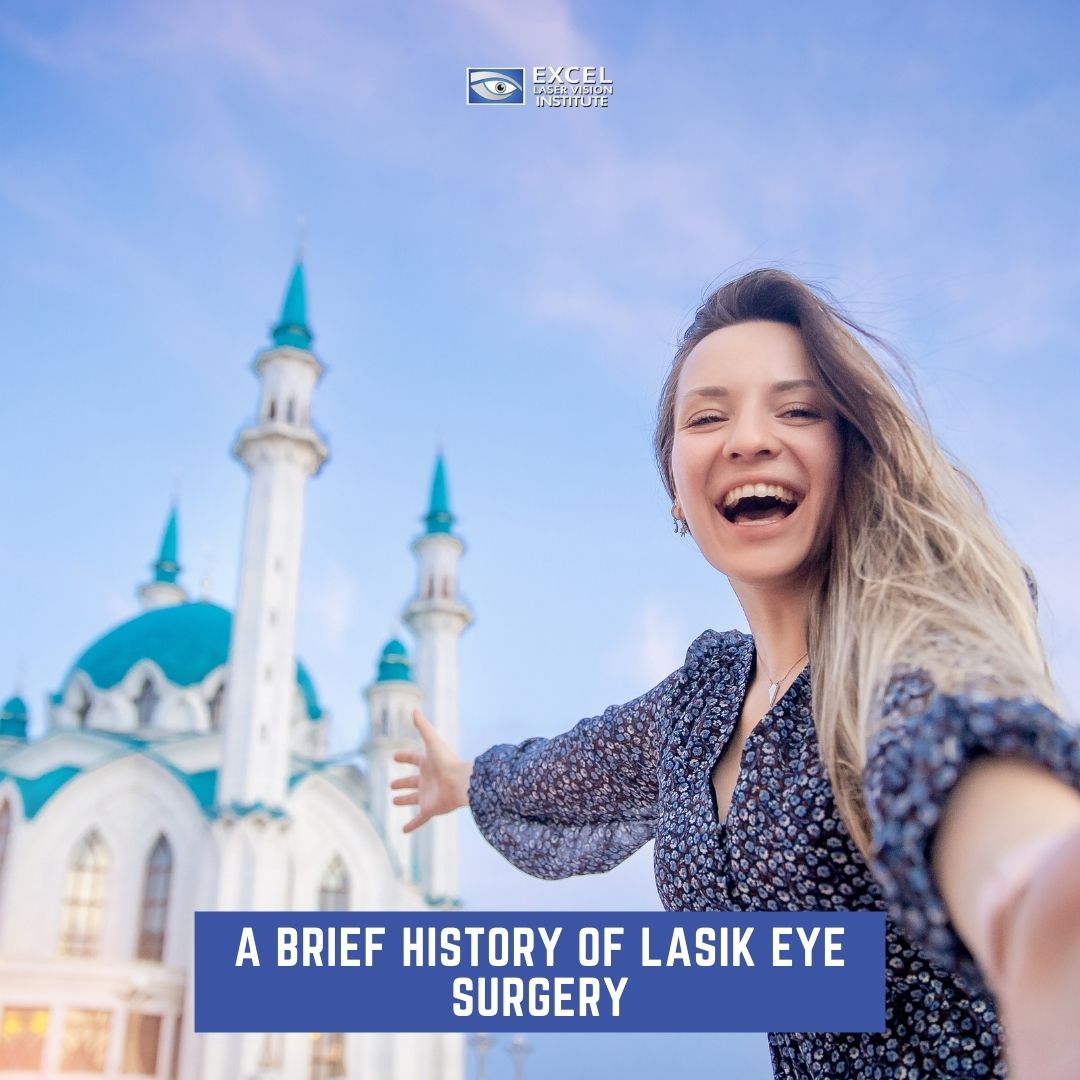
A Brief History of LASIK Eye Surgery
Although LASIK eye surgery was approved by the FDA in the late 1990s, its history goes back many years earlier. If you have poor eyesight, you may be wondering a lot about LASIK Los Angeles surgery, including how it was invented. The story actually goes way back and has been developed over the decades by many optic specialists across the world. History buffs, get ready because you’ll have a field day with this one!
Back in 1948, Spanish ophthalmologist Jose Barraquer (1916-1998) invented the very first technique of reshaping the cornea, the outer layer of the eye, naming it keratomileusis. This means “sculpting of the cornea.” His passion for creating new surgical inventions made him a pioneer in the optical industry, transcending modern practices as we know them today. Today, he is remembered as the “father of modern refractive surgery”.
In 1960, Jewish-American physicist and engineer Theodore Maiman (1927-2007) invented the laser, the world’s first coherent light in Malibu, California. Although not a medical doctor, he granted future optic surgeons the ability to create amazing innovations such as laser eye surgery we now have in Los Angeles. Indian-American doctor Mani Lal Bhaumik would go on to build from Maiman’s creation and invent the Excimer laser, an ultraviolet laser. He presented his research leading to his invention in front of the Optical Society of America in 1973. This would lead to American scientists first conducting studies on how lasers could be used to correct vision problems in the late 1980s. Meanwhile, Russian ophthalmologist Svyatoslov Fyodorov (1927-2000) invented radial keratotomy, commonly referred to as RK, which was used to reshape a person’s cornea to fix myopia (nearsightedness). It still exists today, but varies from LASIK surgery as LASIK is designed to fix defects in eyesight as opposed to reshaping the cornea. Lasik eye surgery also has fewer complications than RK.
Ultimately, LASIK eye surgery itself is accredited to being invented by Dr. Gholam A. Peyman, an Iranian-American ophthalmologist. He built up a very impressive resume, having received a medical degree from the University of Freiburg in Germany, which is the country’s 5th oldest university. He completed internships in both Germany and the United States, eventually landing him a faculty position at the University of California, Los Angeles’ School of Medicine. After leaving UCLA, Dr. Peyman moved on to serve as a professor at the Illinois Eye and Ear Infirmary at the University of Illinois. During his time at the university, he developed an interest in lasers and their effects on the eye. He spent years studying them, but had to wait to put his knowledge to use as the lasers were expensive and many people understandably felt it was dangerous to be experimented with such new technology. Eventually, he would be granted permission by University of Helsinki’s Physics Department in Finland to perform these experiments and develop the LASIK technology he had been carefully studying for so long. Since then, 10 million Americans have had LASIK surgery and made their glasses and contacts a thing of their past.
Today, at the age of 85, Dr. Peyman serves as an emeritus professor of ophthalmology at Tulane University. It is thanks to him that tens of thousands of people now enjoy the benefits of Los Angeles LASIK eye surgery. He even has his own website where you can view his multiple publications and achievements. About 8 out of 10 American adults are candidates for lasik, and chances are, you probably are, too. An overwhelming 95% of patients have reported that they are satisfied with the outcome of their surgery, so if you are ready to begin your journey today, call Harvard-educated Dr. Ferzaad Moosa’s office at (866) 923-9235. Our staff is ready to assist you with any of your questions and help you create a plan to help you afford your surgery so that you can start living a better, more productive life.
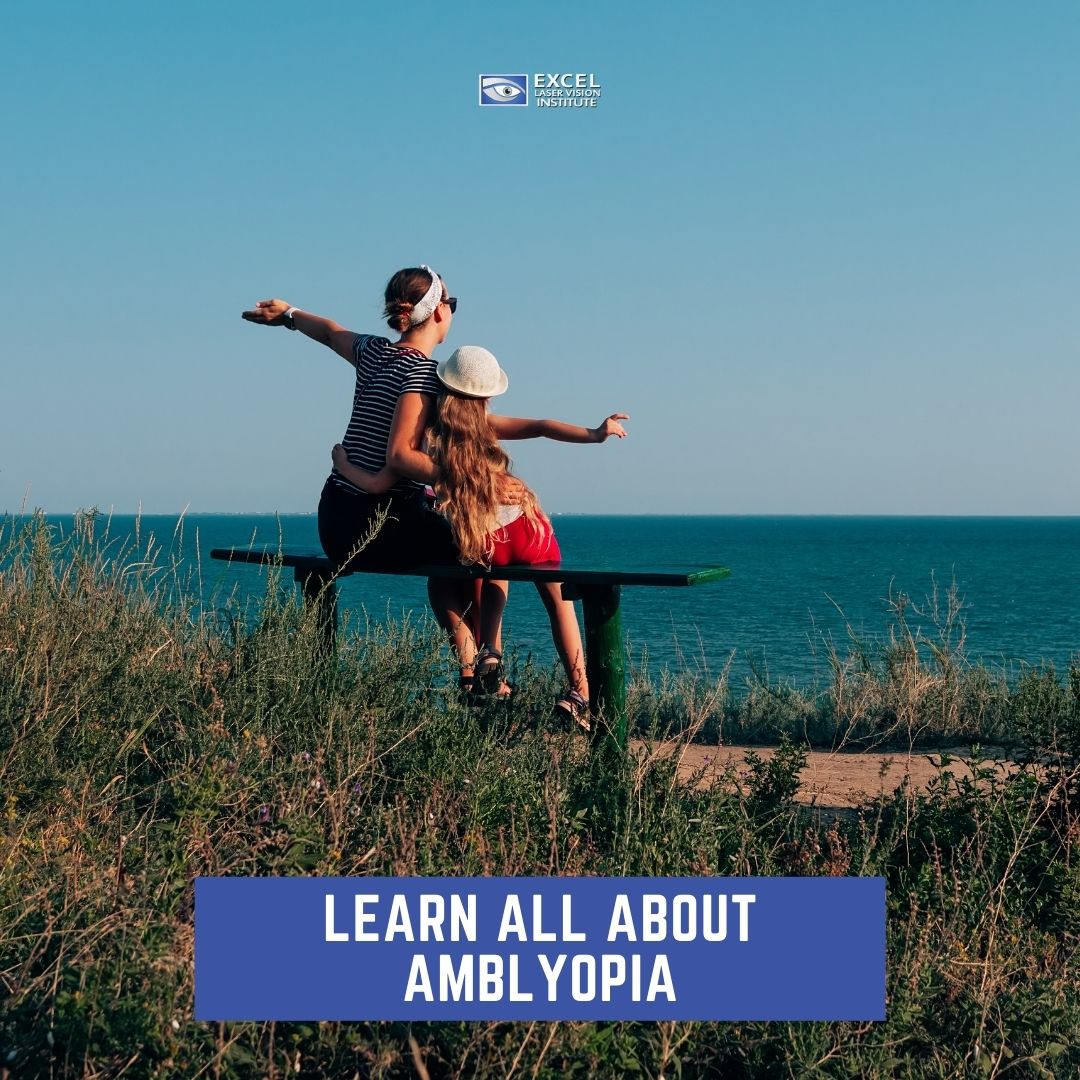
Learn All About Amblyopia
Amblyopia, commonly known as “lazy eye,” is a relatively common eye condition that develops in children between birth and 7 years, but will typically appear before age 5. Typically, a person will have one lazy eye, and it is estimated that up to 3% of the American population has the condition. As Los Angeles LASIK specialists, we want you and your family to stay informed on eye conditions that may be affecting you or your loved ones. If you have a family history of amblyopia and are concerned your child may be experiencing the condition, it is important you get familiar with the risk factors and know when it’s time to seek medical help.
Amblyopia occurs when a person’s brain favors their better eye, resulting in the other eye’s vision becoming blurry. A person’s weaker eye is apparent to others and can result in embarrassment among peers. It is the most common cause of vision loss in children. Lazy eyes can be the result of multiple pre-existing conditions. If your child was born prematurely, was smaller than average (less than 20 inches) at the time of birth, or has any developmental disabilities, then the chances of them having amblyopia increases. A lazy eye may also be caused by a squint, known in the medical world as strabismus, a droopy eyelid (ptosis), or a cataract (clouding of the eye lens).
It is very important to receive treatment for your child’s lazy eye as soon as possible, as neglecting to do so can result in blindness. All children ages 3-5 should be getting their vision checked at least once and will be able to detect any vision problems present in your child. Treatment for amblyopia is also far more effective in children than in adults.
There are multiple treatments that can be used for a lazy eye, including:
Glasses
As you are most likely already well aware, glasses are typically used to help people with nearsightedness or farsightedness, so while some people with a lazy eye use glasses, it is not the only form of treatment they must use.
Patches
Patches must be worn between 3-6 hours a day and are applied on your stronger eye. This will help get the weaker eye working better, but the treatment does not work overnight and can even take years for the necessary effects to kick in. Following the patch, surgery may be necessary.
Eye drops
These are recommended above patches, as you only need to use the drops once a day. Not only is it less distracting than wearing a patch, but according to the study, “atropine treatment did affect visual acuity in the sound eye at six months more than did patching.”
Under the Food and Drug Administration, LASIK surgery is not approved for children under 18 years of age. The shape of your child’s cornea (the clear, protective outer layer of the eye) is still developing until they reach adulthood, and proceeding with LASIK surgery will result in undesirable outcomes later in their life. It is also worth noting that most adults who do undergo laser eye surgery in Los Angeles will need to continue to wear glasses after their procedure.
As a parent, your child’s well-being is of your utmost concern. At Excel Eye, Dr. Moosa and his entire team are committed to the highest quality eye care for you and your entire family and assist you with any reservations you may have about your eye health. As we like to say, our patients are a part of our family – so if you’re ready to join our happy family today, don’t wait another day! Get in touch with one of our offices right now! We have respective offices in Los Angeles and in Orange County.
Give us a call today at (866) 923-9235.
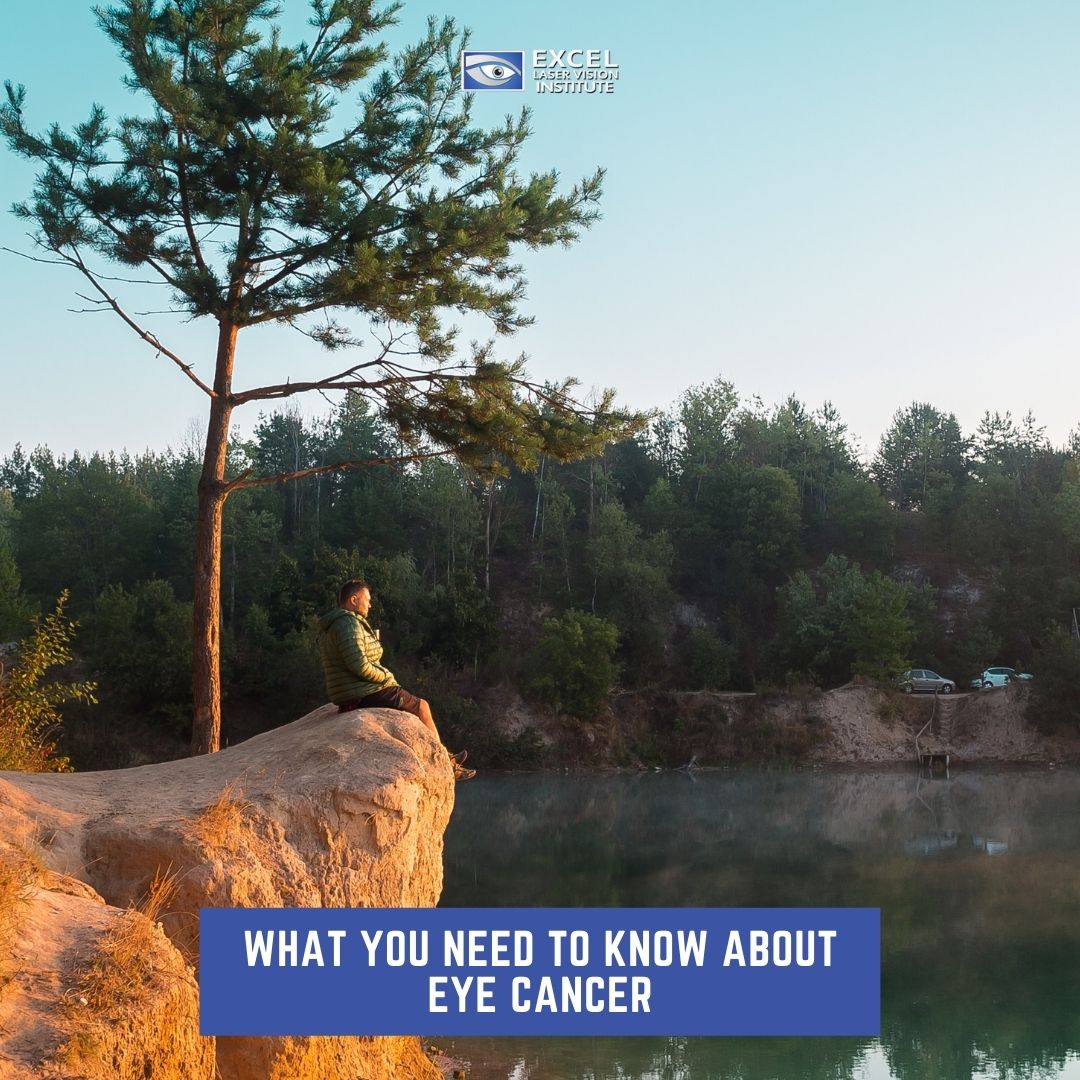
What You Need to Know About Eye Cancer
Eye cancer, medically referred to as ocular melanoma, is not one of the most discussed types of cancer, and this is for a good reason. However, as an eye patient, it is useful to have surface-level knowledge of eye cancer so that you can better educate and keep your visual health at an optimum level, and as Orange County LASIK surgery experts, it’s our job to answer all your questions on these topics. Here’s what you should know about it to help you address any possible concerns you may have:
First, let’s get familiar with the three layers of your eyes
Sclera – The outer layer, the white part of your eye
Uvea – The middle layer
Iris – the colored part of your eye that is in charge of processing how much light that enters it
What causes eye cancer?
It is not currently known by doctors the exact cause of eye cancer. However, we do know that certain populations are more at risk, including:
People age 50 and over. The average age to receive a diagnosis is 55 years.
Race. Caucasians are more likely to have eye cancer than Hispanics than African Americans.
People with a family history of eye cancer
It is possible that overexposure to sunlight could be a risk factor, but scientists have not yet been able to confirm this speculation.
Classifications of eye cancer
The SEER (Surveillance, Epidemiology, and End Results) database, maintained by the National Cancer Institute (NCI) classifies eye cancer in 3 groups: localized (cancer that has not spread beyond the eye), regional (cancer that has spread outside the eye to nearby areas), and distant (cancer that has spread further into the body). The more localized the eye cancer, the higher the rate of 5-year patient survival. Where exactly in the body the cancer originated from also plays a large factor into this.
It’s rare.
This is the good news. Your chances of getting a form of eye cancer are 6 in 1 million, with only 3,500 new cases reported a year. The most common type in adults are uveal or choroidal melanoma, and the 5-year survival rate of eye cancer patients is an overwhelmingly high 84%. In children, the most common type of primary eye cancer is called retinoblastoma. As its name suggests, this is a disease where the cancerous cells appear in the retina.
Symptoms can include but are not limited to:
Increasingly blurry vision
Partially or completely losing your vision
One of your eyes is bulging
Lumps in the eye
Irritation or redness in one or both of your eyes
Be aware that some of these symptoms may not necessarily mean you have a form of eye cancer for sure. These can also be symptoms of other eye conditions. If you experience any of these, contact your eye care provider immediately for a formal evaluation.
How is it treated?
You may be wondering if specialized Orange County laser eye surgery may be the solution to the problem at hand. The answer is not so simple. Lasik is designated for correcting eyesight and cannot remove any cancerous tumors. Depending on the type of eye cancer, its severity, and an individual’s medical profile, there are several ways an eyecare doctor may go about treating it.
How you can decrease your risk
Although your odds of getting eye cancer at any stage of your life is slim and in itself is difficult to prevent, it is important that you continue to do all the necessary things to take care of your eyes, including taking breaks from cell phone and computer screens, eating healthy, wearing sunglasses when exposed to UV rays, exercising regularly, and refraining from smoking.
Conclusion
You are probably relieved to hear directly from the Orange County LASIK specialists that it’s unlikely that you will develop eye cancer, but that doesn’t mean that you can’t develop other forms of vision problems at some point. In order to remain healthy, you must prioritize every aspect of your body. Treat it as a vessel that is worthy of your respect in your everyday life. Think of it this way: it’ll be hard to look forward to anything if you can’t see!
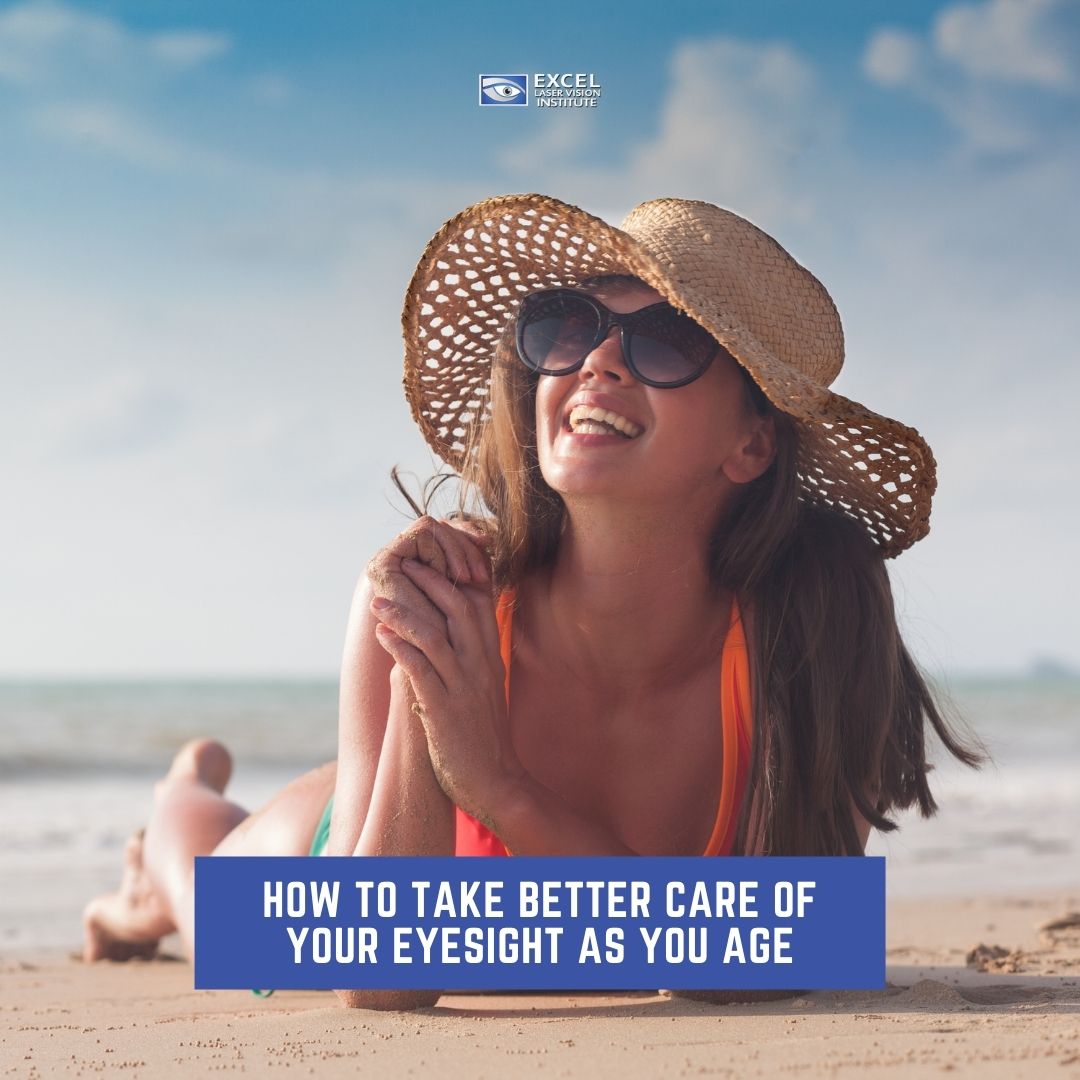
How To Take Better Care of Your Eyesight as You Age
We all want to stay in our 20s or 30s forever so that we won’t have to experience all the downsides of getting older, but unfortunately, we cannot prescribe a fountain of youth to you, so the next best thing we can do for you is advise you on how to take care of your eyesight over the course of your life. While some people naturally have better eyesight than others due to genetics, there are still things you can do to help yourself. In fact, it is imperative that you prioritize your eyecare because some forms of damage are irreversible. Here are some tips on how to prioritize the best care for your eyesight today:
Always wear your glasses or eye contacts
This sounds like a given, but if you have naturally poorer eyesight and have not yet committed to laser eye surgery in Los Angeles, why would you want to go out and not be able to see anything? Even if your eyesight is not terrible without them, you should be using them at all prescribed times regardless. Also remember to clean your prescribed products accordingly exactly as your specialist instructed you. Don’t cut corners!
Eat an adequate amount of fruits and vegetables
Remember hearing “an apple a day keeps the doctor away?” While this very simplistic advice, the point is, just because mom and dad aren’t around to force you to eat your veggies anymore doesn’t mean you should stop. Your diet can have a direct impact on how well you can see and your overall health. It is recommended that you consume foods that are high in omega-3 fatty acids, lutein, zinc, and vitamins C and E.
Take breaks from screen time
If you work in an office, then you are spending roughly 8 hours a day in front of a computer screen. Remember to take frequent breaks from the screen, even if it’s just to get up and get coffee for a couple of minutes. White collar workers also have a higher risk of certain health problems such as diabetes, cardiovascular disease, and obesity from sitting down in a chair too much, so it’s important to ensure that you are maintaining a healthy diet and exercising enough when you are not on the job. We know it’s difficult in this day and age because nearly everything is done online now, but also consider limiting your cell phone usage since you’re already working on the computer so much most days of the week. You should also stop using all your devices at least half an hour before you go to sleep.
Wear sunglasses
If you are constantly exposed to UV radiation, not wearing the proper sunglasses will come with dire consequences. You will eventually experience blurry vision or in the worst case scenario, blindness or even eye cancer, if you do not wear sunglasses when you need them. You can get UVA ray and UVB ray-blocking sunglasses at your local drug or convenience stores for relatively cheap, so you don’t really have an excuse to not have at least one pair on you!
Protect your eyes when performing certain tasks
If you are in a woodshop class, you must wear the proper eye protection gear at all times. If you are an avid swimmer, make sure that you are wearing goggles every time you take a dip.
Keep it clean
Living in a dirty space can result in dust getting into your eyes. Don’t let any dirt build up in your home or workspace. It’s not only annoying but unsanitary for your overall well-being.
Be wary of your eye make-up
Don’t use certain products if they give you an allergic reaction. You must also always remember to remove your make-up entirely before you go to bed and cleaning your brushes periodically. Failing to do so will result in bacteria forming on your eyes and a higher risk of an infection.
Ditch the cigarettes
It turns out that smoking isn’t only terrible for your lungs, but also for your eyes, but yet a couple of years ago it was surveyed that 34.1 million adults in the United States still smoke cigarettes. While more people are reportedly quitting, it’s best to be aware of the risks before you ever consider picking up the habit. Your body – and your vision – will definitely thank you later.
Be aware of your family history and risks
If you have a family history of certain eye conditions, be sure to communicate this clearly with your optometrist. They will be able to provide you with the best medical advice and treatment plan specifically for you.
If you have other health conditions such as high cholesterol, high blood pressure, or diabetes, get that in check.
All of these conditions can directly impact your overall eye health. Ensure that you are getting the treatment you need by visiting your physician or other medical specialist whenever you are due for an appointment.
The bottom line
At Excel Eye, our team is committed to the highest quality care specifically for you. Your eyes are unique to you alone and we want you to feel proud of them. As one of your five senses, we have obtained the highest expertise and technology available on the market so that you can start living your life better today. Our devotion to our patients is not something you will have to “see to believe!” So if you are in need of laser vision surgery, do not put it off any longer. Contact one of our offices in Los Angeles or in Orange County today. As one of the top LASIK eye surgery professionals in Los Angeles, we look forward to assisting you in your eye surgery journey and changing your life for the better.
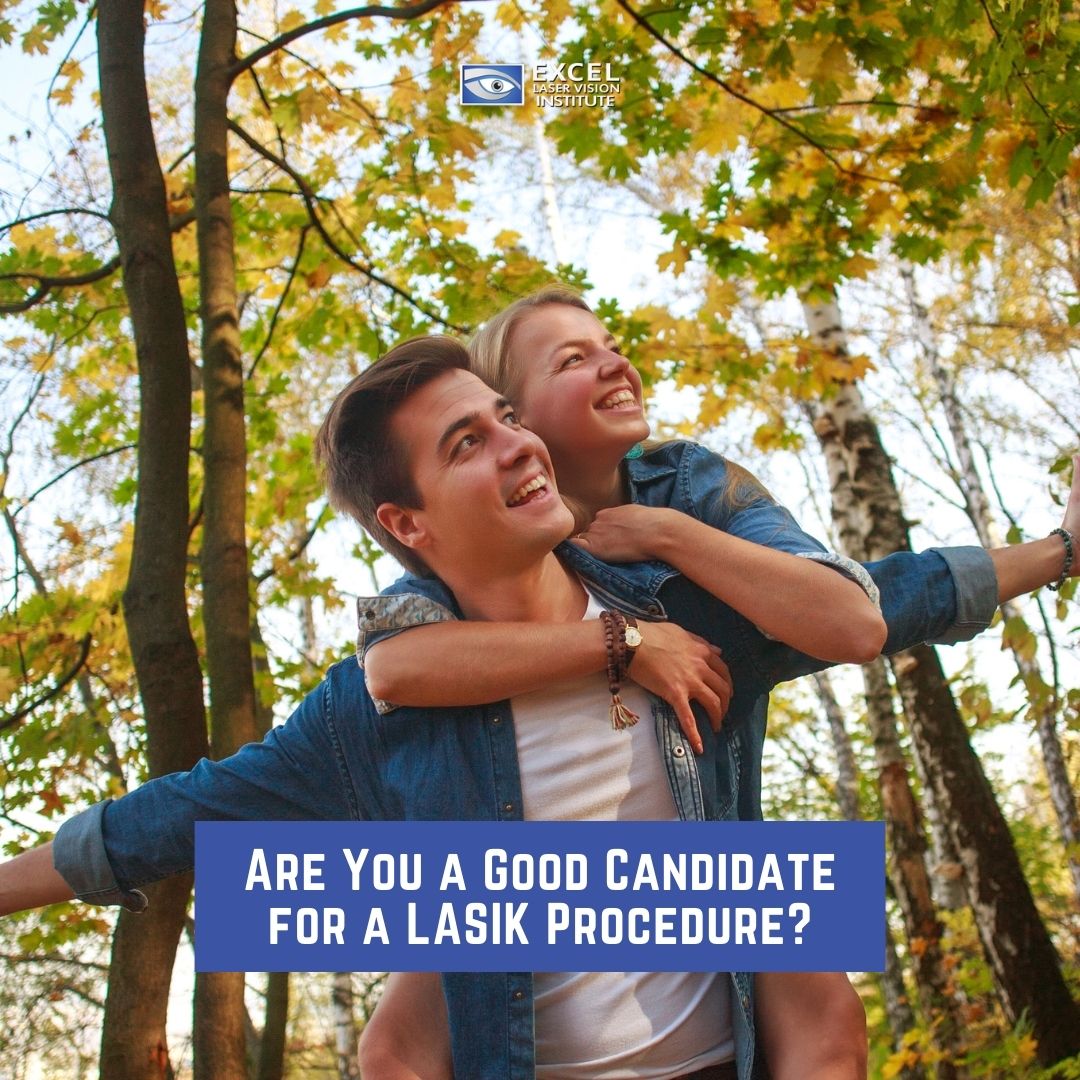
Are You a Good Candidate for a LASIK Procedure?
If you want the most successful LASIK procedure in Orange County, apart from having a highly experienced LASIK eye surgeon, you have to meet specific patient criteria to determine whether eye surgery is suitable for you.
LASIK and PRK results are usually always good; however, not everyone is a suitable candidate for vision correction surgery.
Below is a checklist from the best laser eye surgery doctor in Orange County to provide you with a good start to help you determine if LASIK or PRK is appropriate for you.
You Should Have Healthy Eyes
If you suffer from a condition that affects how your eyes respond to surgery or how they heal afterward, you have to wait until that condition is dealt with. Good examples of this are:
-
Conjunctivitis (pink eye)
-
Severe dry eye syndrome
-
Infection
-
Any type of eye injury
If you have persistent dry eyes, which means you do not produce sufficient tears to maintain lubricated and healthy eyes, LASIK surgery may worsen this condition. Common symptoms of dry eyes consist of burning or stinging, a gritty sensation in the eye, less tolerance to wind, intermittent blurry vision, and even excessive tears in some instances. If you have some of these symptoms, do not hesitate to discuss them with your laser eye doctor before surgery.
Your LASIK surgeon can conclude if you have dry eyes during your preoperative exam and can usually treat the condition successfully so you can then go ahead with laser eye surgery. Possible treatments include artificial tears, punctal plugs, medicated eye drops, flaxseed or fish oil supplements, or a combination of these methods.
Also, cataracts that interfere with your vision and uncontrolled glaucoma will usually prevent you from being a candidate for LASIK or PRK procedures.
Your Cornea Must Be Thick Enough
Many LASIK refractive procedures in Orange County improve visual acuity by modifying the eye’s front surface (cornea). Carrying out laser eye surgery on a very thin cornea or one that has a surface that is very irregular and askew, such as the case of those who suffer from keratoconus, could jeopardize results and impair your vision.
If the LASIK eye surgery team in Orange County previously informed you that you couldn’t have LASIK since your corneas are very thin, recent breakthroughs may mean you’re now an acceptable candidate for laser vision correction. For instance, your eye surgeon can use a femtosecond laser rather than a microkeratome that can help him or her create a thinner corneal flap and, as a result of that, keep more of the underlying corneal tissue for laser treatment.
Moreover, suppose you’re still not a suitable candidate for LASIK or PRK regardless of the advanced technologies and techniques. In that case, another kind of refractive surgery, such as implantable lenses (phakic IOLs), could be a good alternative.
You Shouldn’t Have Very Big Pupils
If you have naturally large pupils, you could be at a higher risk of side effects such as glares, halos, and starbursts in low light, particularly when driving at night.
Your Prescription Must Be Within A Specific Limit
If you have a very high prescription, whether it’s because of farsightedness, nearsightedness, or astigmatism, your laser eye surgeon may recommend that you do not do the LASIK procedure.
Plus, very high amounts of myopia, for instance, would need the removal of too much corneal tissue and put you at higher risk of vision problems.
If you suffer from a severe refractive error, another type of vision correction surgery may be a better alternative, such as phakic IOL implantable lenses or refractive lens exchange.
You Have To Be Old Enough
Particular procedures require you to be 18 years old, and there are others that need the patient to be 21 years old. Patients who are younger than these ages can be treated as an exception with the vigilance of a LASIK surgeon and with permission from the patient’s parent(s) or guardian.
Typically, an upper age limit to laser eye surgery does not exist. Nevertheless, it is critical to keep in mind that you may still require reading glasses to correct near vision when you reach your forties because of a normal, age-related condition known as presbyopia.
Obviously, your LASIK eye surgeon may also consider you as a candidate for surgical correction of presbyopia such as monovision LASIK, which can improve your near vision without reading glasses or bifocals.
Considering women are at a higher risk for dry eyes after menopause, men have a greater risk for dry eyes later in life. As mentioned above, you should treat a dry eye condition before LASIK surgery.
Your Vision Has To Be Stable
Teenagers and many young adults often experience adjustments in their contact lens prescription and eyeglass prescription from year to year. Refractive errors need to be stable for at least 12 months before undergoing LASIK or other refractive surgery.
Typically, it is nearsightedness that slowly becomes worse, but there may be other changes as well.
This is why younger people are not appropriate candidates until their eyes have settled down into one prescription. Your optometrist can inform you whether your prescription is stable.
You Have To Be In Good Health
Contraindications to laser eye surgery may include uncontrolled degenerative conditions or uncontrolled autoimmune diseases such as rheumatoid arthritis, Sjogren’s syndrome, type 1 diabetes, and AIDS. People infected with HIV who have good immune cell counts may be candidates for LASIK.
Essentially, if your body has any trouble with healing, you will have a higher probability of an unsatisfactory LASIK surgery result. Opinions vary among LASIK surgeons on which diseases are automatic disqualifiers and which ones might be acceptable risks in specific cases.
Additionally, particular medications can intensify risks linked with laser eye surgery. For instance, immunosuppressants may disrupt post-operative healing, and some medications may increase the chance and/or severity of dry eye syndrome.
Ultimately, the only way to know for sure that LASIK is the best eye correction surgery for you is to contact Excel Laser Vision Institute today!
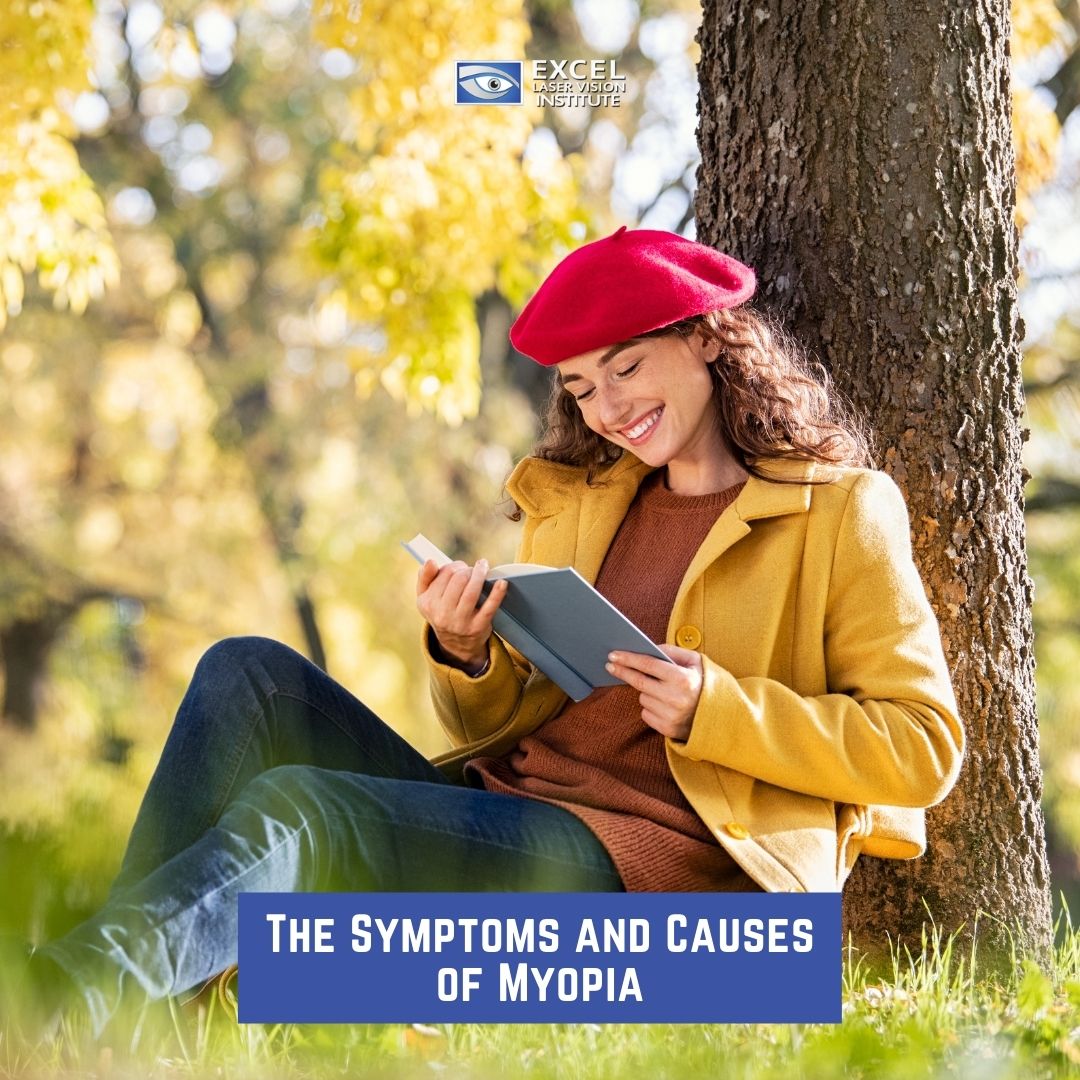
The Symptoms and Causes of Myopia
The LASIK eye doctors in Los Angeles let us know that Myopia, also known as nearsightedness, is the most prevalent cause of impaired vision in people under age 40. Recently, it’s becoming more common at an alarming rate. Around the world, research suggests that in the year 2000, an estimated 25 percent of the world’s population was nearsighted, but by the year 2050, it’s anticipated that roughly half the people in the world will be myopic.
What Are The Symptoms Of Myopia?
When you speak to the best LASIK surgeons in Los Angeles and find that you are nearsighted, you will find it very challenging to read road signs and see distant objects clearly. However, you will find that it is a lot easier to see and do close-up tasks such as computer use and reading.
The LASIK surgeons say that the other symptoms and signs of Myopia consist of squinting, eye strain, headaches, and feeling fatigued when driving or playing sports. All these are symptoms of uncorrected nearsightedness.
If you notice these signs or symptoms while wearing your glasses or contact lenses, schedule an eye exam with your LASIK doctor in Los Angeles to see if you need to modify your prescription to something stronger.
What Causes Myopia?
Myopia happens when your eyeball is too long, with respect to the focusing power of the lens and cornea of the eye. As a result, light rays aim attention at a point in front of the retina instead of directly on its surface.
Essentially, the best laser eye surgery simplifies this by saying that Myopia happens when light concentrates too distant in front of the retina.
Also, nearsightedness can come about when the cornea and/or lens are too curved for the eyeball length. In some cases, Myopia happens because of a combination of these factors.
Typically, Myopia starts in childhood, and you may have a probable chance of having it if your parents have nearsightedness. In most situations, nearsightedness stabilizes in early adulthood, but sometimes it carries on to progress with age.
What’s The Treatment For Myopia?
There are some effective myopia control methods for children with progressive nearsightedness, including myopia control glasses, atropine eye drops, myopia control contact lenses, and Ortho-k contact lenses.
For the rest of us, nearsightedness can be corrected with standard contact lenses, prescription eyeglasses, or refractive surgery.
Depending on how bad your Myopia is, your eye doctor may advise you to constantly wear your eyeglasses or contact lenses or only when you require very clear distance vision. For instance, when you’re driving, seeing a whiteboard, or watching a movie.
Suitable selections for eyeglass lenses for nearsightedness include high-index lenses (for thinner, lighter glasses) and lenses with anti-reflective coating. Also, think about photochromic lenses to protect your eyes from UV rays and high-energy blue light and to scale down the need for a separate pair of prescription sunglasses.
If you’re nearsighted, you may notice that the first number (“sphere”) on your eyeglasses prescription or contact lens prescription will be ahead of a minus sign (–). Keep in mind that the higher the number, the more nearsighted you are.
Refractive surgery can lower or even stamp out your need for eyeglasses or contacts. An eye surgeon carries out the most common procedures using an excimer laser.
- In PRK, the laser takes off a layer of corneal tissue, which flattens the cornea and lets light rays focus more precisely on the retina.
- In LASIK, which is the most prevalent refractive procedure, a thin flap is made on the surface of the cornea, a laser gets rid of some corneal tissue, and then the flap is brought back to its original position.
Last but not least, there is orthokeratology, which is a non-surgical procedure where you wear special rigid gas permeable (RGP or GP) contact lenses at night that reshape your cornea while you sleep. When you take off the lenses in the morning, your cornea for a short period keeps to the new shape, so you can see clearly during the day without having to rely on eyeglasses or contact lenses.
Orthokeratology and an accompanying general practitioner contact lens procedure known as corneal refractive therapy (CRT) have been shown to temporarily correct mild to moderate amounts of Myopia. Both methods are excellent alternatives to surgery for individuals who are too young for LASIK or are not suitable candidates for refractive surgery.
Additionally, implantable lenses called phakic IOLs another surgical option for correcting nearsightedness, especially for persons with high amounts of Myopia or thinner-than-normal corneas that could escalate their risk of complications from LASIK or other laser vision correction procedures.
Phakic IOLs work similarly to contact lenses, except they are surgically placed within the eye and are usually permanent, which means no upkeep is required. Unlike IOLs used in cataract surgery, phakic IOLs do not replace the eye’s natural lens, which is left intact.
How To Control Myopia?
Since many people are becoming nearsighted, there is a lot of appeals to discover methods that control myopia progression in childhood.
Various techniques have been attempted, including fitting children with progressive lenses, bifocals, and gas permeable contact lenses. All of these have brought mixed results.
Recent clinical trials revealed that low-dose atropine eye drops could decelerate myopia progression in school-age children, with far fewer side effects compared with higher concentrations.
However, some children don’t respond well to atropine drops.
Based on a 2017 study from the American Academy of Optometry meeting, a dual-focus disposable contact lens decreased the progression rate of Myopia with children between the ages of 8 and 12 years when on par with a single vision lens.
Make sure to visit Excel Laser Vision Institute if you’re having problems seeing near objects or find yourself holding your smartphone or reading material further away to make out the words. The professional, dedicated and caring staff at Excel Laser Vision Institute can treat your nearsightedness.

Is Cataract Surgery Safe?
If you have cataracts, you may probably need cataract surgery in Orange County or Los Angeles. It’s a procedure that stores cataract-related vision loss. When your surgeon performs the corrective eye surgery, the clouded lens inside your eye gets replaced with a clear artificial lens. The procedure is entirely painless, and it typically takes around 15 minutes. Normally, it’s an outpatient procedure and you don’t have to stay overnight at the hospital according to the cataract surgeon in Los Angeles and Orange County.
At first, some patients think cataract surgery is scary. However, it’s one of the most risk-free and efficient vision surgeries around today. Every year, millions of cataract surgeries are carried out in the U.S., and many individuals have excellent results. The more senior a person is, the higher the potential need for cataract eye surgery since cataracts usually develop or worsen.
Based on facts from the National Institutes of Health (NIH), cataracts affect
Around 1 in 20 of people aged 50-54
An estimated half of people aged between 75 to 79
More than 2 in 3 people over the age of 80
What Does Cataract Surgery Involve?
The cataract eye surgeon in Orange County and Los Angeles will remove the cloudy lens inside your eye and replace it with a clear artificial lens during surgery. The device that’s used is called an intraocular lens, or IOL for short.
An IOL restores the clear vision you had before the cataracts developed. During any cataract removal in Los Angeles or Orange County, special safety measures are taken to ensure the patient is as pain-free and relaxed as possible. The most a patient will experience is a slight feeling of pressure, but this sensation isn’t painful.
A modern cataract surgery procedure will usually follow these actions:
The surgeon creates a small incision along the side of the cornea.
A high-frequency ultrasound device or laser is utilized to break up the cloudy lens into small fragments carefully.
The lens fragments are carefully removed from the eye using a suction device.
Once all the fragments have been removed, the surgeon puts in the IOL behind the pupil and the colored part of the eye, the iris, in the same place your natural lens used to be.
The incision doesn’t require any stitches to heal.
Your eye surgeon will put a protective shield over your eye to keep it safe during the early stages of recovery.
If you require surgery in both eyes, your cataract surgeon will typically wait for one to three weeks between procedures to allow the first eye to heal.
What Are The Two Different Options For Cataract Surgery?
When you ask for cataract eye surgery cost, you want to know what options you have available for cataract surgery. The most familiar type of cataract removal surgery is known as phacoemulsification, or phaco for short. A phacoemulsification procedure involves high-frequency ultrasound waves to break up the cloudy lens.
Currently, the phaco operation is performed with smaller incisions than ever before, so healing is faster with a much lower risk of complications.
Three main kinds of IOL can be implanted during cataract surgery:
Monofocal lenses – One of the most common options for most surgeries. These may still need the use of eyeglasses or reading glasses after the corrective eye surgery. If prescription glasses are required, your ophthalmologist will prescribe them about a month after surgery. Optionally, presbyopia can be treated by modifying the power of one of your monofocal IOLs to create a condition called monovision.
Accommodating lenses and multifocal lenses – Convenient for individuals who have presbyopia. These lenses can correct your reading vision without surrendering your distance vision. Both of these IOLs offer a huge range of vision after cataract surgery than traditional monofocal lenses.
Extracapsular surgery – rather than break up the cloudy lens with an ultrasound, an eye surgeon will take out the core in one piece, then the rest with a suction device. Extracapsular surgery consists of a longer incision, and antibiotic eye drops before the procedure. This type of cataract surgery procedure is usually only carried out in complicated cases.
Laser cataract surgery, or Refractive Laser-Assisted Cataract Surgery (ReLACS), is more contemporary option that utilizes more advanced technology.
Instead of ultrasound energy, a specialized laser is brought in to disrupt the existing cataract. The laser doesn’t need as much energy as an ultrasound, which can lower the risk of complications even more.
In some instances, laser surgery can also enhance visual outcomes.
Laser surgery is usually more pricey than standard phaco cataract surgery. During your cataract removal consultation, your eye surgeon can help you understand which procedure is the most suitable for your individual requirements.
How To Get Ready For Cataract Surgery?
Prior to your scheduled cataract surgery, your eye doctor will carry out a thorough eye exam to evaluate the overall health of your eyes and figure out if anything will prevent you from having surgery.
Also, the ophthalmologist will carry out a refraction test to find out if you’re nearsighted, farsighted, and/or astigmatic prior to surgery. Other measurements of your eyes will be taken to determine the shape of your eye and which type of implantable lens you’ll require.
Before your eye surgery, the medical team will advise you on what to expect before, during and after your procedure. This information will help you to make an informed decision about going forward with surgery.
Your eye doctor will discuss with you any medications and supplements you’re on. Some of these can boost your risk of complications and may need to be stopped for a short time
If you have any queries or concerns about cataract surgery, make sure you talk about them with your cataract surgeon and optometric physician before signing the “informed consent” documents that authorize surgery.
At Excel Laser Vision Institute, we have a team of experienced and dedicated staff easily answer all of your questions and put you at ease about your corrective eye surgery. We only use cutting-edge laser technology to perform cataract surgery, and other vision correction alternatives. Our Harvard-trained surgeon, Dr. Moosa, serves at our Orange County as well as at the Los Angeles offices. Once we assess your prescription and eye health, we can talk about which eye correction treatment is best for you, financing, and the next steps. Begin your journey towards a clear vision that eliminates your dependence on eyeglasses and contact lenses today.
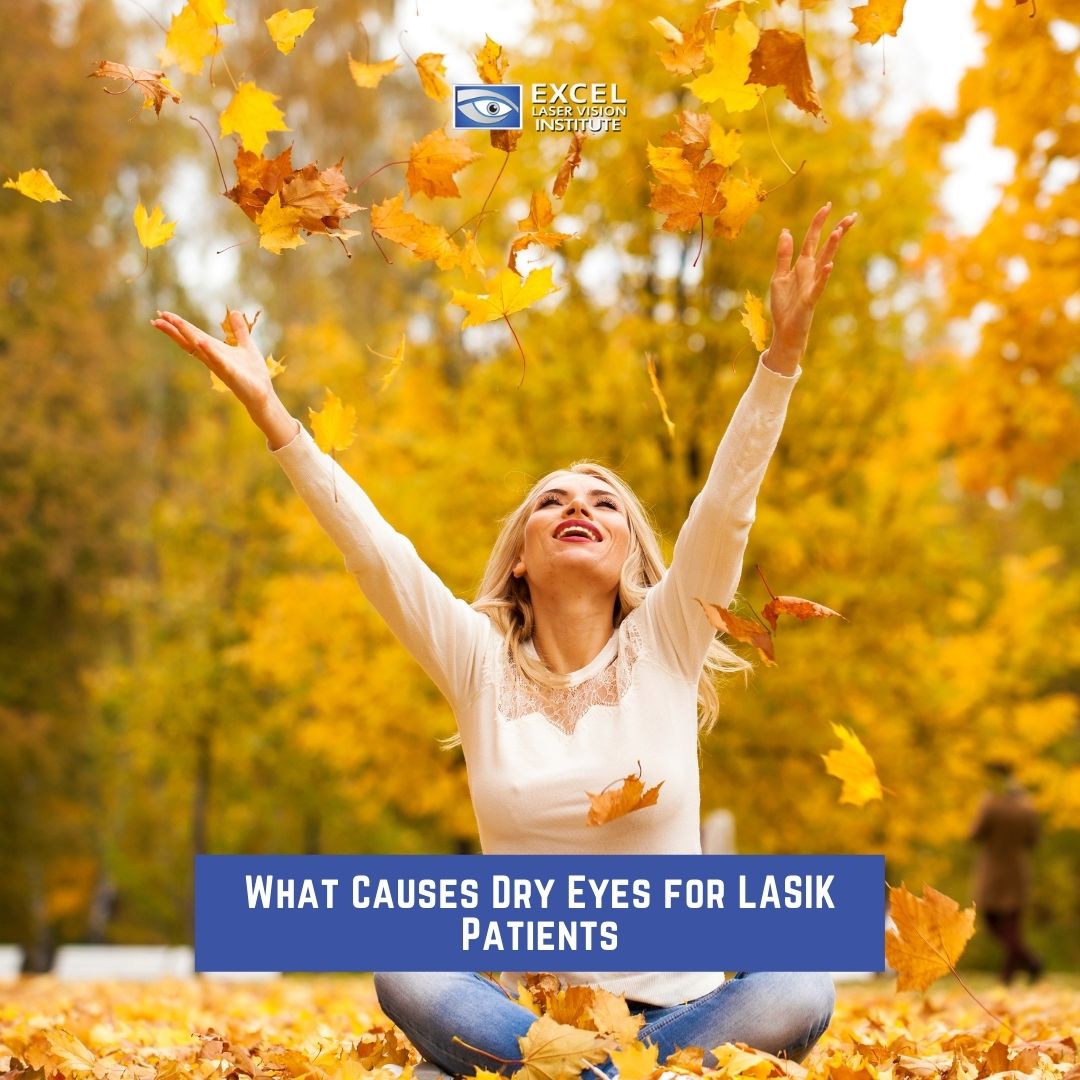
What Causes Dry Eyes for LASIK Patients
Patients who come to get LASIK in Los Angeles complaining of dry eyes are told that their eye condition is a chronic lack of lubrication and moisture on the eye’s surface. The eye needs a sufficient and consistent layer of tears on its surface to maintain eye health, remain comfortable, and help a person to see correctly.
Laser vision correction doctors in Los Angeles told us that tears wash the eye’s surface to keep it moist and clear away dust, debris, and microorganisms that could harm the cornea and cause an eye infection.
A normal tear film includes three crucial components:
An oily (lipid) component created by meibomian glands in the eyelids
A watery (aqueous) component is produced by lacrimal glands found behind the outer visible feature of the upper eyelids.
A mucous-like (mucin) component created by goblet cells in the conjunctiva that covers the white of the eye (sclera).
Each component of the tear film has an important role. For instance, tear lipids help keep the tear film from vaporizing too quickly and boost lubrication. Mucin helps anchor and spread the tears throughout the surface of the eye.
The outcome of dry eyes stretches from subtle but consistent eye irritation to serious inflammation. Also, it could cause scarring of the front surface of the eye.
Besides being known as dry eye syndrome, dry eye disease, or just “dry eye,” alternative medical terms used to characterize dry eyes include:
Keratitis sicca. Typically used to describe dryness and inflammation of the cornea.
Keratoconjunctivitis sicca. Used to talk about the dry eye that affects the cornea as well as the conjunctiva.
Dysfunctional tear syndrome. Used to stress that poor quality of tears can be as critical as low quantity.
What Causes Dry Eyes?
There are many causes of dry eyes:
Aging – Dry eye syndrome can happen at any age, but it becomes more common when you get older, particularly after age 50.
Menopause – Post-menopausal women are at higher risk of dry eyes than men of the same age.
Computer use – When working at a computer, using a smartphone or other portable digital device, we usually blink our eyes less completely and less frequently. As a result, there is greater tear evaporation and an increased risk of dry eye symptoms.
Contact lenses – It can be challenging to understand how much worse contact lenses can make dry eye issues. However, dry eyes are the main reason why people stop wearing contacts.
Indoor environment – Air conditioning, ceiling fans, and air heating systems all can lower indoor humidity. This can accelerate tear evaporation, leading to dry eye symptoms.
Outdoor environment – Dry climates, high altitudes, and dry or windy conditions amplify dry eye risks.
Air travel – The airflow in the cabins of airplanes is very dry and causes dry eye problems, particularly with frequent flyers.
Smoking – Besides dry eyes, smoking has been associated with critical eye issues, including macular degeneration, cataracts, and uveitis.
Health conditions – Specific diseases such as diabetes, thyroid-associated conditions, lupus, rheumatoid arthritis, and Sjogren’s syndrome can result in dry eye issues.
Medications – Many prescription and nonprescription medicines boost the risk of dry eye symptoms, including antidepressants, antihistamines, specific blood pressure medications such as beta-blockers or diuretics, and birth control pills.
Eyelid problems – Incomplete closure of the eyelids when blinking or sleeping, known as lagophthalmos), can result in severely dry eyes. Severe dryness can cause a corneal ulcer if left untreated. Lagophthalmos has many origins, including eye infections, natural aging, and nerve damage from trauma or cosmetic blepharoplasty.
LASIK – LASIK and other corneal refractive surgery can sometimes result in dry eyes. In most situations, however, dry eye discomfort after LASIK is short-term and clears up within a few weeks of the procedure. If you have dry eyes before your Los Angeles LASIK, your eye doctor may recommend dry eye treatment before your procedure to ensure your best corrective eye surgery results.
Wearing a mask – Many masks, particularly those worn to protect against the spread of COVID-19, can dry the eyes because they force air out the top of the mask and over the surface of the eye. When you wear glasses with a mask, the air can pass over the eyes even more.
Allergies – Allergies can result in dry eyes, and as mentioned above, taking antihistamines to relieve allergies can also result in dry eyes.
Dry Eye Symptoms
Symptoms and signs of dry eyes and dry eye syndrome are the following:
Sore eyes
Dryness sensation
Red eyes
Itchy eyes
Aching sensation
Heavy eyes
Fatigued eyes
Mucus in or around the eyes
Discomfort when wearing contact lenses
Burning sensation
Feeling like something is in your eye
Photophobia (light sensitivity)
Blurred vision
As strange as it may come across to some LASIK patients in Los Angeles, watery eyes can also be a symptom of dry eye syndrome.
The reason for this is dryness on the eye’s surface can sometimes bring about the overproduction of the watery part of your tears as a kind of protective mechanism. However, this “reflex tearing” does not remain on the eye long enough to repair the underlying dry eye condition.
Besides these symptoms, dry eyes can cause inflammation and sometimes permanent damage to the eye’s surface.
Also, dry eye syndrome can affect the results of LASIK and cataract surgery. So be sure that you don’t suffer from dry eyes when you ask for Lasik eye surgery cost.
Treatment And Prevention Of Dry Eyes
Dry eye syndrome is an ongoing and chronic condition. Revolving around its cause and severity, it may not be completely curable.
Nevertheless, in most situations, dry eyes can be managed successfully. Normally, treatment results in greater comfort, fewer dry eye symptoms, and, in some instances, sharper vision.
Here is a list of dry eye treatments that eye doctors typically use to lower the symptoms and signs of dry eyes. Your ophthalmologist may prescribe only one of these dry eye treatments or a mix of treatments, depending on the cause(s) and seriousness of your condition.
Artificial tears eye drops
Restasis
Xiidra
Steroid eye drops
Lacrisert
Punctal plugs
Meibomian gland expression
Warm compresses
LipiFlow
Intense pulsed light
Nutritional supplements
If you suffer from dry eyes, do not hesitate to get in touch with Excel Laser Vision Institute. These expertly trained LASIK doctors will help you recover from your dry eyes and also prepare those who wish to do LASIK after their dry eye conditions.


